Nakayama is in between Narita And Haneda International Airport
<クッキーについての同意並び欧州居住者向けプライバシーポリシー>
中山・下総・散歩道
The 33 Pilgrimages in Gyoto and Urayasu
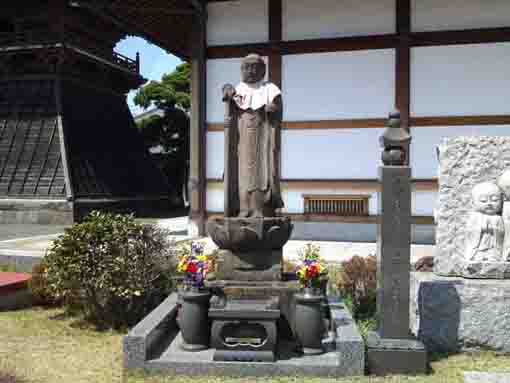
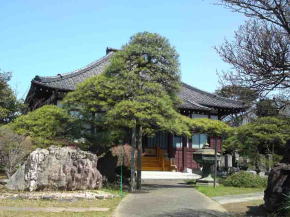
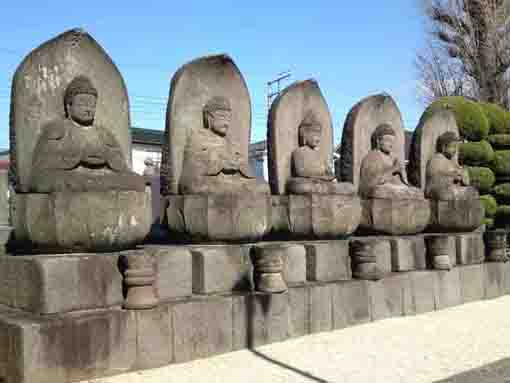
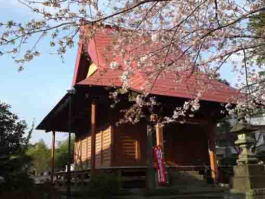
The 33 Pilgrimages in Gyotoku and Urayasu was a very popular course of tourism in Edo period. Visit Ise Jingu Shrine, the 88 pilgrimages in Shikoku and the 33 pilgrimages in west (around Kyoto) were very far for the people living in Edo at that time. And also the 33 pilgrimages in Bando (Kanto region) and Chichibu in Saitama prefecture needed many days to complete their tours. Then a newly Pilgrimage was designed in Gyotoku and Urayasu because the area was one of the closest popular tourist resort for people in Edo. Gyotoku and Urayasu was very near to Edo and also the 33 temples were in the small area, so it could give the divine favors to the people who had had complete the pilgrimage 3 times. The pilgrimage begins from the first temple Tokuganji in connection with the strongest samurai worrier Musashi Miyamoto, and it ends at the extra temple Fujiwara Kannondo Hall where Musashi and his son in law Iori first met at, thus it could be said that the pilgrimage sounds like a journey for sumrai worriers to train their martial arts since both start and end are deeply related to Musashi Miyamoto.
Moreover, the temples in Gyotoku and Urayasu area are very close to each other. You could visit them on foot from the stations nearby. It means that to complete the 33 Pilgrimages in Gyotoku and Urayasu has been the close and easy for people living in Edo then and Tokyo even now.
Why don't you try to complete the 33 Pilgrimages in Gotoku and Urayasu?
Why don't you visit the 33 Temples on this movie?
This movie is a slideshow created by some pictures of the temples. Why don't you watch it?
The Temples of the 33 Pilgrimage in Gyotoku & Urayasu
The list of the temples of the 33 Pilgrimages in Gyotoku and Urayasu
- 01 Tokuganji : 5-22 Hongyotoku Ichikawa-shi
- 02 Fukusenji :2-7 Futamata Ichikawa-shi
- 03 Choshoji : 8-5 Hongyotoku Ichikawa-shi
- 04 Jishoin : 1-10 Hongyotoku Ichikawa-shi
- 05 Daitokuji : 5-13 Shimonijuku Ichikawa-shi
- 06 Jorinji (abandoned) : around Kawara Ichikawa-shi
- 07 Shogenji : 3-6 Kawara Ichikawa-shi
- 08 Yofukuin : 5-16 Kawara Ichikawa-shi
- 09 Ryugonji (Sorinji) : 3-10-2 Tokagi Ichikawa-shi
- 10 Fukuoji (Sorinji) : 3-10-2 Tokagi Ichikawa-shi
- 11 Ryogokuji : 2-16-4 Koya Ichikawa-shi
- 12 Anyoji : 2-16-35 Koya Ichikawa-shi
- 13 Hosenji : 7-22 Hongyotoku Ichikawa-shi
- 14 Hozenji : 1-25 Honshio Ichikawa-shi
- 15 Jokanji : 23-24 Hongyotoku Ichikawa-shi
- 16 Shingyoji (Kyoshinji) : 38-18 Hongyotoku Ichikawa-shi
- 17 Kyozenji (Kyoshinji) : 38-18 Hongyotoku Ichikawa-shi
- 18 Hoshoji (abandoned) : now brought into 19 Tokuzoji
- 19 Tokuzoji : 8-10 Sekigashima Ichikawa-shi
- 20 Seiganji : 4-8 Oshikiri Ichikawa-shi
- 21 Korinji : 12-20 Oshikiri Ichikawa-shi
- 22 Hodenji : 7-1 Minato Ichikawa-shi
- 23 Enmyoin : 11-21 Minato Ichikawa-shi
- 24 Zenshoji : 18-20 Minato Ichikawa-shi
- 25 Genshinji : 1-16-26 Katori Ichikawa-shi
- 26 Ryozenji : 2-12-18 Ainokawa Ichikawa-shi
- 27 Shinseiji : 1-9-1 Arai Ichiakawa-shi
- 28 Enmeiji : 1-9-2 Arai Ichikawa-shi
- 29 Zenpukuji : 26-27 Todaijima Urayasu-shi
- 30 Kezoin : 3-10-3 Nekozane Urayasu-shi
- 31 Togakuji : 2-4-27 Horie Urayasu-shi
- 32 Hojoin : 4-14-1 Horie Urayasu-shi
- 33 Dairenji : 4-14-2 Horie Urayasu-shi
- extra Fujiwara Kannondo Hall 2-234 Fujiwara-cho Funabashi-shi
* Please ask some specific information in each temple.
The Maps To Visit The 33 Temples
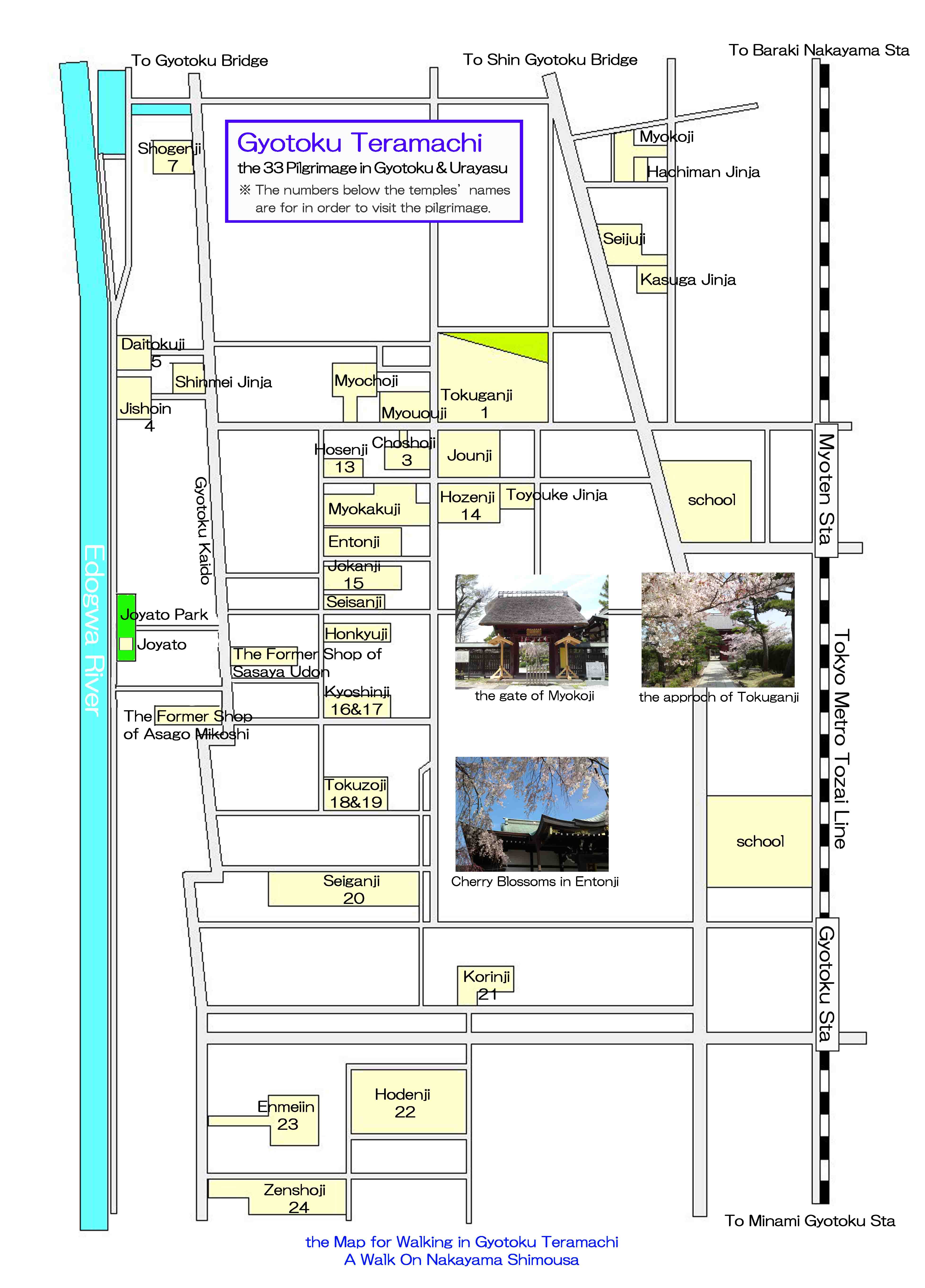
The map to visit the 1st and 3rd to 7th and 13th and 21st temples
PDF of the Map of the landmarks in Gyotoku Teramachi Areas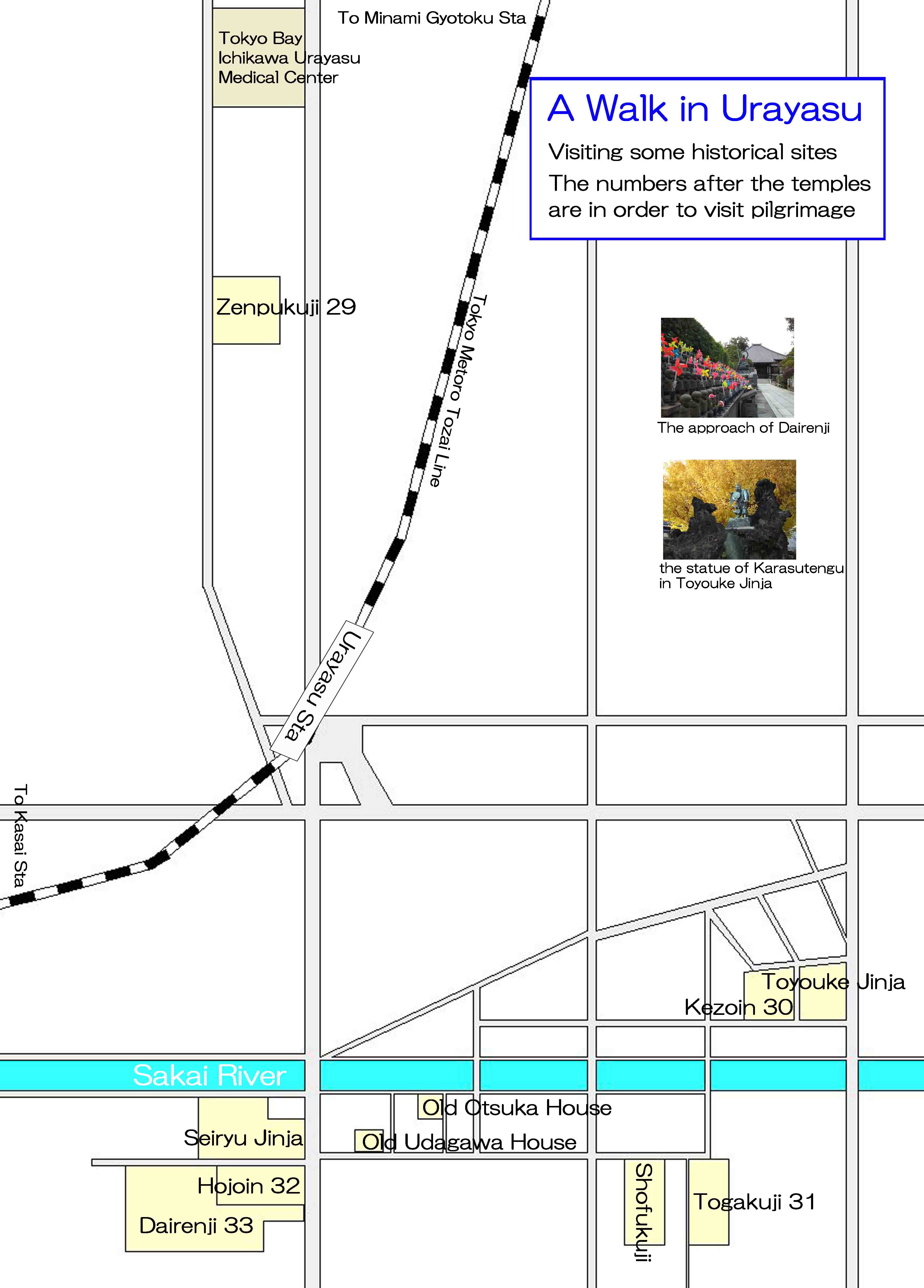
The map to visit the 29th to 33rd temples
PDF of the map of the landmarks near Urayasu Station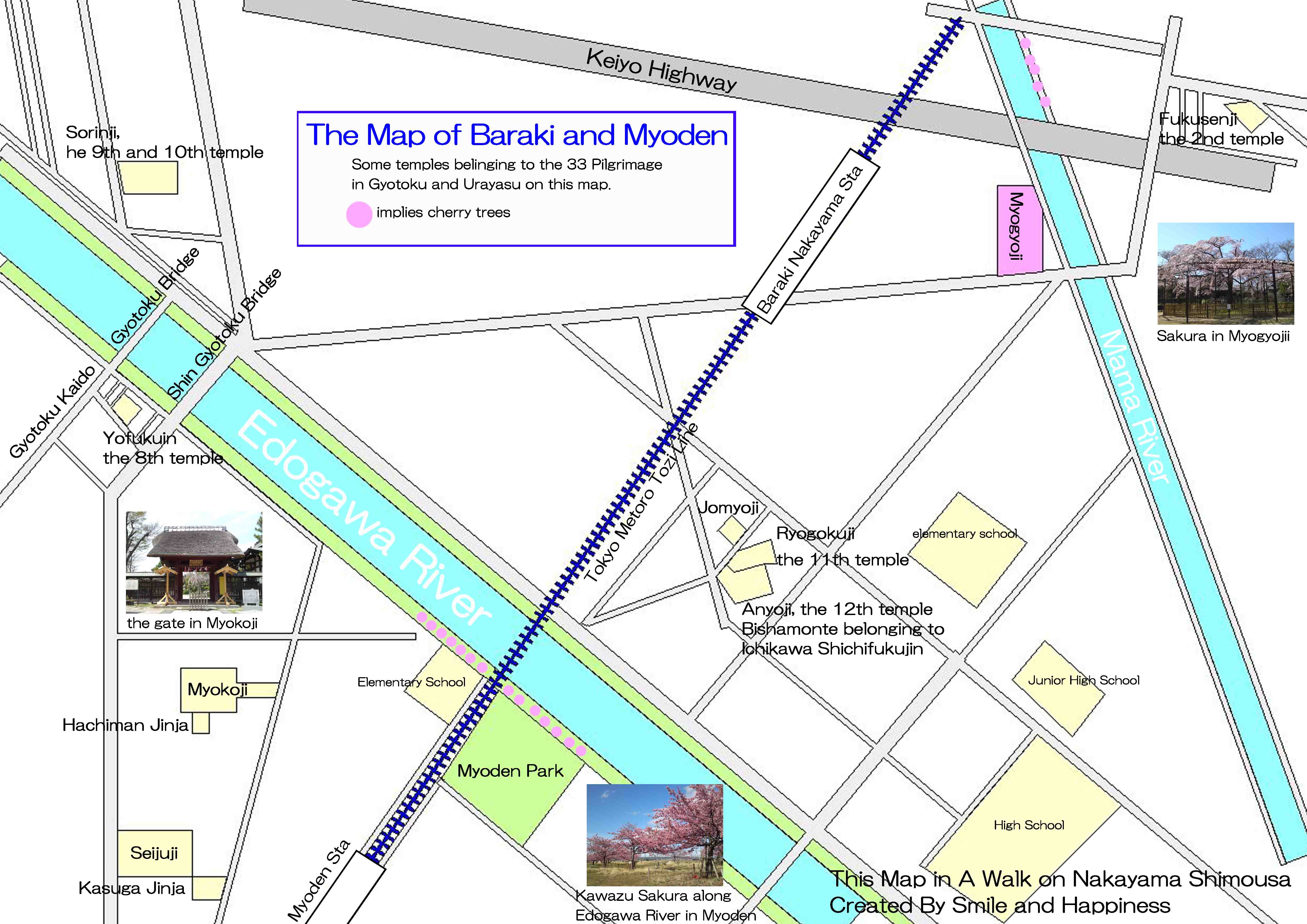
The map to visit the 2nd and the 8th to 12th temples
The Map of the landmarks in Baraki Nakayama and Myoden Areas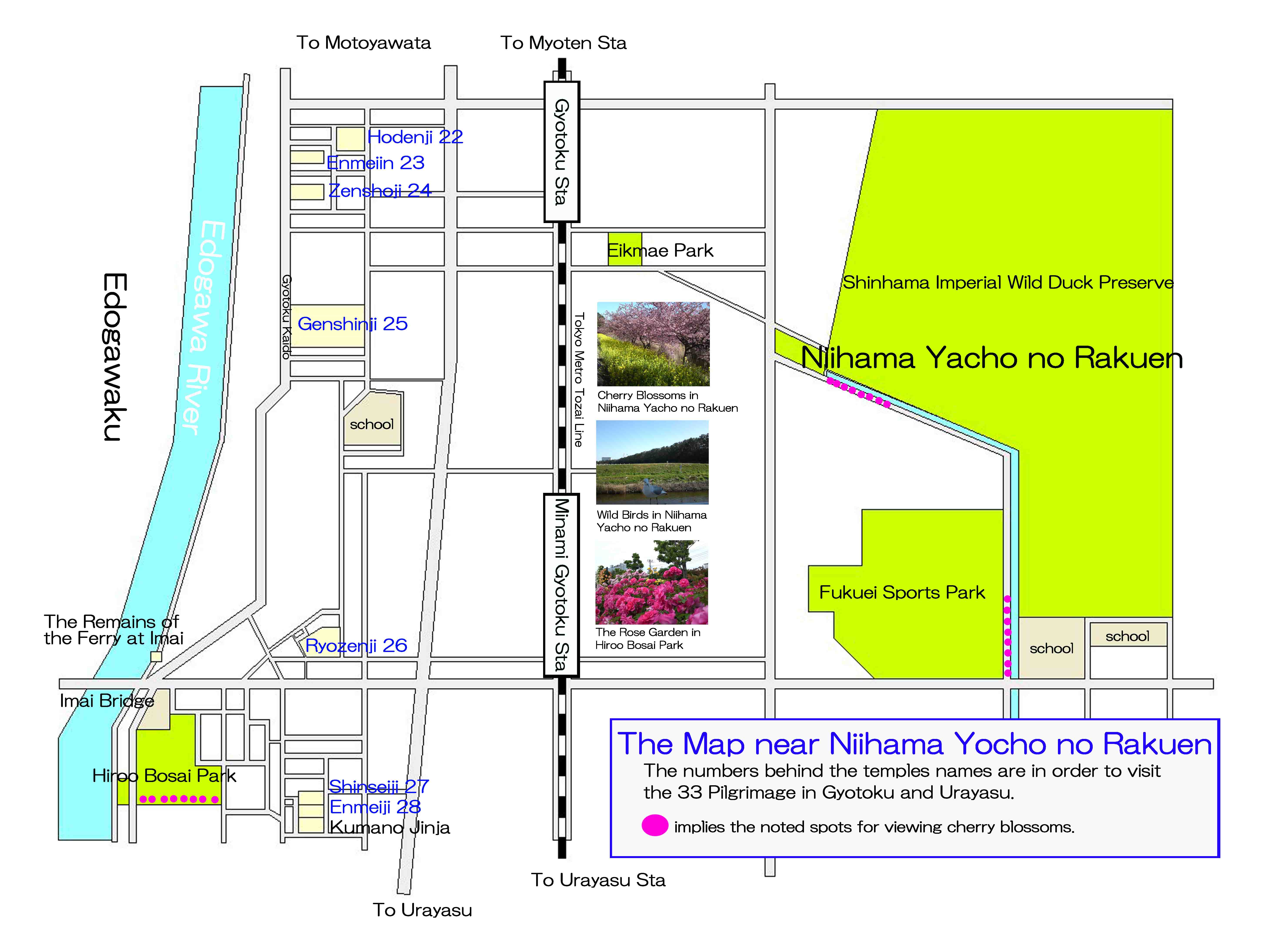
The map to visit the 22nd to 28th temples
PDF of the map of the landmarks near Niihama Yacho no Rakuen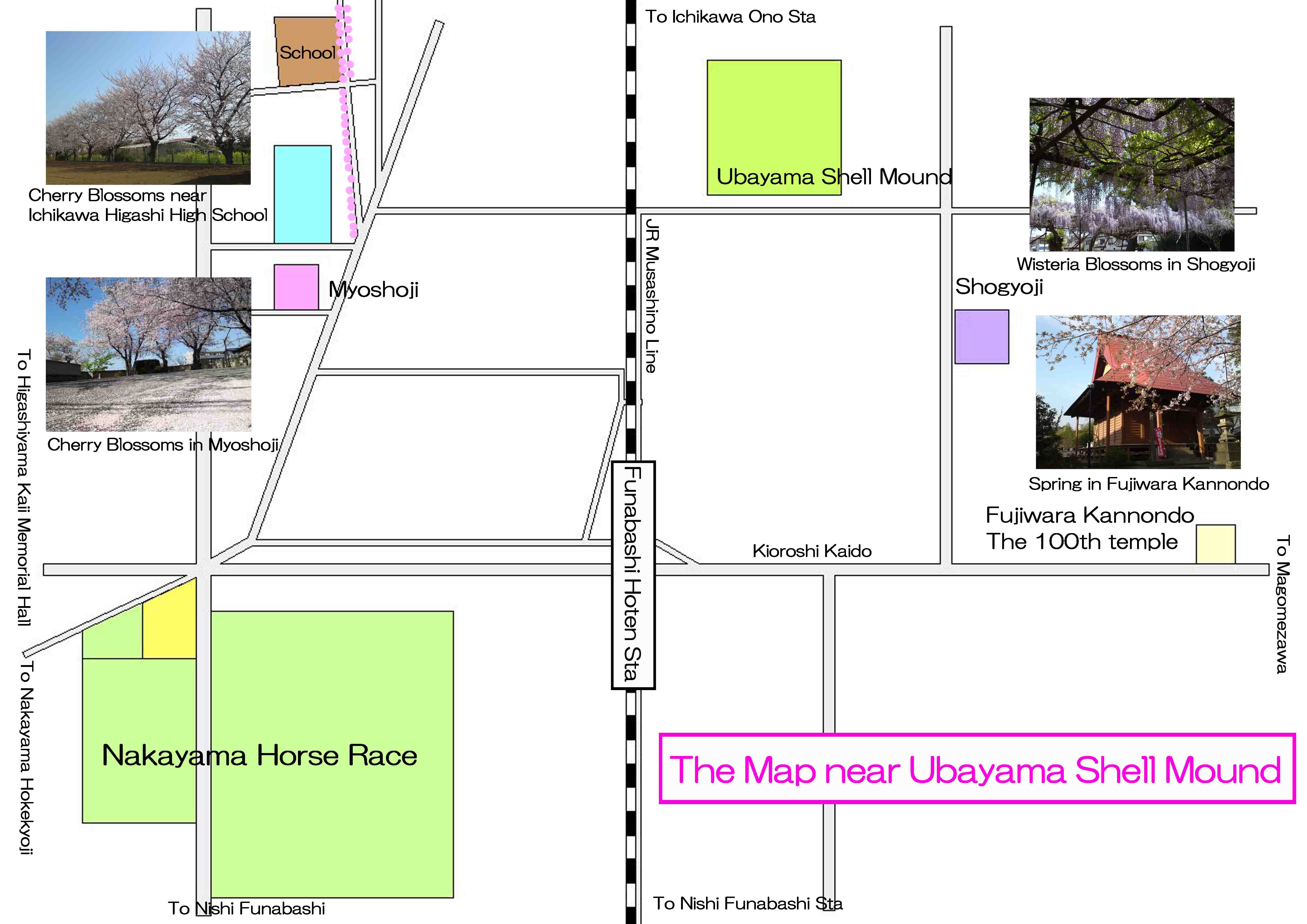
The map to the 100th temple
PDF of the map of the landmarks near Ubayama Shell MoundThe Recomended Courses To Visit The 33 Temples
All temples of the 33 Pilgrimage in Urayasu and Gyotoku is set in Urayasu City, Gyotoku in Ichikawa City and Fujiwara in Funabashi City, Though the all 33 temples are standing on the small area in east Chiba prefecture, it is not easy to visit in one day. So to visit all the temples completely, it could need a few days, to visit them reasonably, they are divided into 6 groups. Visiting a group in one time could be better for pilgrims to complete the pilgrimage, and visitors could enjoy their trips in Gyotoku and Urayasu as they could have enough time to see them.The Six Groups of the 33 temples in the 33 Pilgrimage
- 1 Teramachi to Naritamichi Road :From the 1st to the 12th temple
- 2 Gongenmichi Road in Gyotoku : From the 13th to the 19th temple
- 3 Near Gyotoku Station : From the 20th to 25th temple
- 4 Minami Gyotoku and Urayasu Sta : From the 26th to the 29th temple
- 5 Near Urayasu Station : From the 30th to the 33rd temple
- 6 Near Funabashi Hoden Station : the extra temple
Actually, spring is the best seasons to visit them as they are in many cherry blossoms. But visitors could enjoy to see them covered with colored leaves in fall. If you try to complete the 100 pilgrimage that you would visit all the 33 temples three times and the extra temple completely, it would be better season for you to start the 100 pilgrimage in early summer since you could enjoy it and take many pictures of the temples in long daylight hours. And the second pilgrimage could be started in fall since you could enjoy to see many trees covered with colored leaves in the temples. Finally, you could start in spring since it would be the best season to visit the extra temple, Fujiwara Kannondo Hall in fully bloomed cherry blossoms in front.
- 広告 Advertisement -
